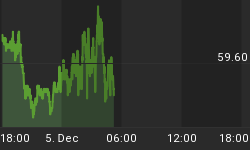Admittedly, it must sound encouraging, and even exciting, to hear proclamations that a “silver” lining is now apparent in the metals complex. Or that a silver “blast-off (is) about to happen”.
Expectations abound for the long-expected, vertical leap in silver prices that never seems to come. And we are told it is supported by solid fundamentals that include supply deficits, a return to the 16 to 1 gold/silver ratio, increasing monetary demand for silver, etc.However, an examination of those fundamentals reveals a different picture. And that picture is inconsistent with the call for higher prices.
The supply deficits (gaps in consumption over production) have been talked about for decades. In the sixties and early seventies they were the principal fundamental in the case for higher silver prices.
Throughout the twentieth century, industrial use of silver increased to the point where the consumption of silver eventually exceeded new production. This is the start of the consumption/production gap to which people refer quite frequently. The government became a willing seller in order to keep the price down. The specific purpose was to keep the price from rising above $1.29 per ounce. This is the level at which the amount of silver in a silver dollar is worth exactly $1.00.
The huge price gains for silver that occurred in the 1970s were largely attributable to years of price suppression prior to that.
Price suppression is not an issue now; and hasn’t been for nearly fifty years. The primary imbalance in supply and demand was corrected in the early seventies. If it hadn’t been, the silver price would already be a lot higher than it is.
The 16 to 1 gold/silver ratio is a myth. The gold-to-silver ratio that existed one hundred fifty years ago was mostly the result of political influence and appeasement. It was an arbitrary number.
There is no fundamental reason which justifies any particular ratio between gold and silver.
Silver is an industrial commodity. Its primary demand is driven by – and its price is determined by – industrial consumption. Any role as a monetary hedge is secondary. This is true even in light of the significant increase in the amount of silver used in minting bullion bars and coins.
The fundamentals simply do not support the bullish expectations for silver. And, there are fundamentals that make silver vulnerable to a big price drop.
Deflation is a more likely near-term possibility than extreme inflation. True deflation results in a decrease in the general price level of goods and services.
As an industrial commodity, silver prices would reflect the full brunt of deflation’s effects. In recent modern history, the lowest recorded prices ($.28 per ounce in November 1932) for silver occurred during the Depression of the 1930s.
Any value from its monetary attributes would afford little or no cushion during deflation.
Another possibility is that we might continue for several more years with relative prosperity and disinflation. This would not stop further price declines for silver.
After it peaked at $48.00 per ounce in 1980, silver’s price declined ninety-two percent over the next thirteen years. It reached a low of $3.57 per ounce during the boom years (February 1993) of the nineties.
It has only been five years since silver last peaked at close to $50.00 per ounce again. How low might it go in the next five years? Maybe not under $4.00 per ounce but $8.00 per ounce is plausible.
Historically, silver is a bust. All of the reasons people give for support of dramatically higher silver prices lose any credibility when one looks at the facts.
For one, silver is ineffective as a monetary hedge. It is not real money (gold is real money) because it is not a store of value. Silver would need to be over $60.00 per ounce right now to approximate comparably what gold’s price reflects regarding the decline of the U.S. dollar.
It is not even close to that. And, ironically, if we use the 16 to 1 ratio that so many think is valid, gold’s price today would be $272.00 ($17.00 per ounce times 16) per ounce. I’m sure no proponent of the 16 to 1 ratio has applied it in such manner.
In addition, on the few occasions when silver has increased in price dramatically, it has been unable to retain any of the increase. I suspect that we are in the midst of something similar now.
In other words, there is likely more downside ahead for silver’s price.
And it could be quite significant.
By Kelsey Williams
















